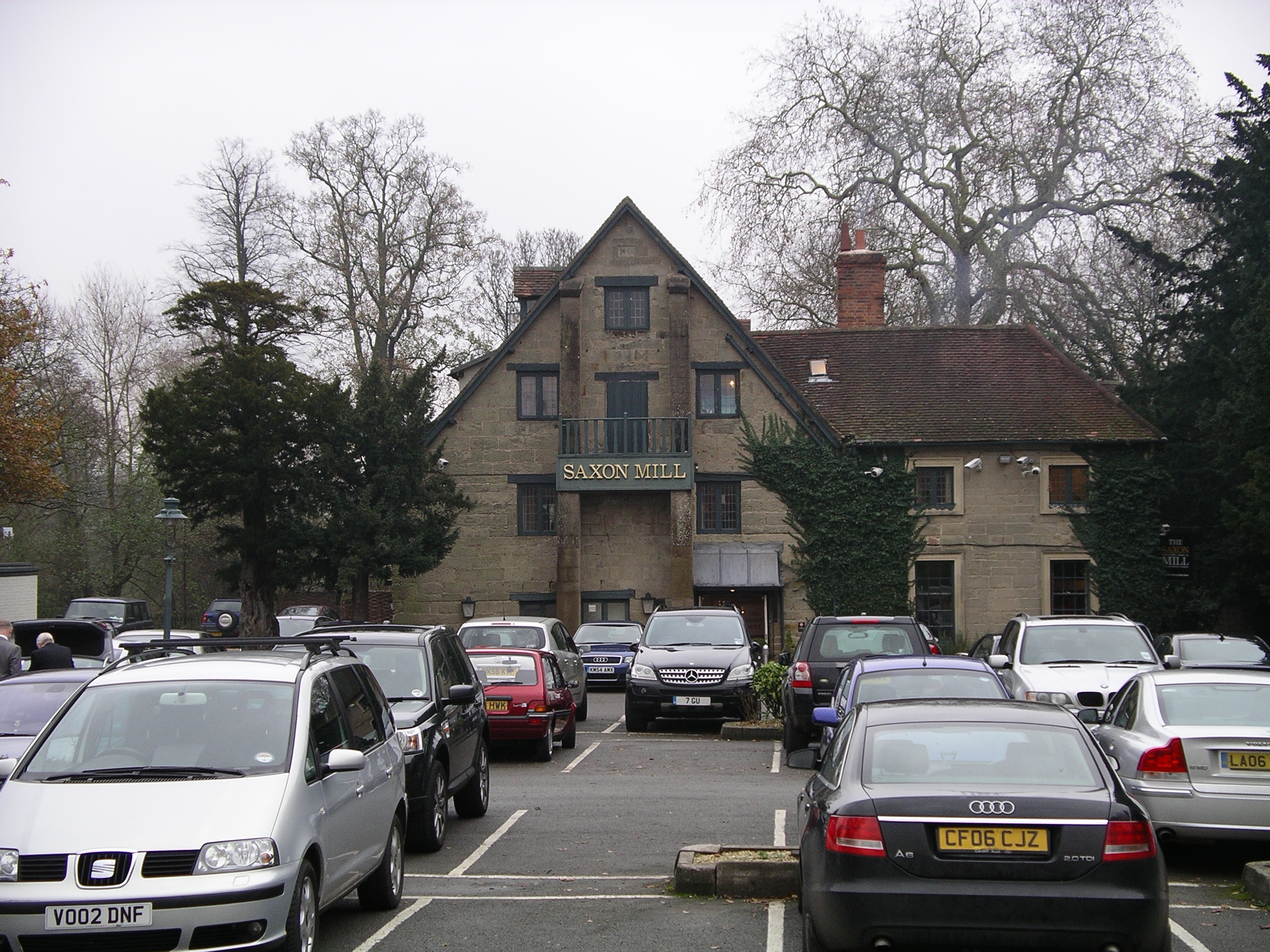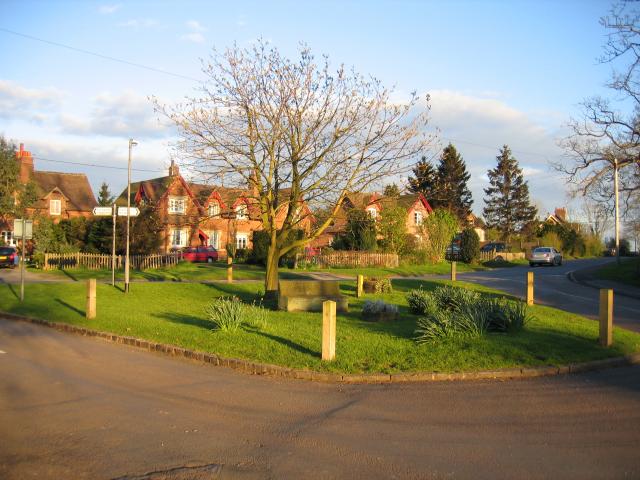|
Saxon Mill
The Saxon Mill is a former mill at Guy's Cliffe, Warwickshire, England, situated about one mile northeast of the town of Warwick. It is now a restaurant and bar. It is on the River Avon and it has a water wheel, although a larger waterwheel has gone. History The mill was originally called Gibbeclive Mill in the 12th century. It was the property of St Mary's Abbey, Kenilworth and the Augustinian canons until the Dissolution of the Monasteries. It was rebuilt in 1822. It was a working mill until 1938, and it was converted into a restaurant and bar in 1952. , the restaurant has a glass window cut-away in the floor where the water can be seen flowing under the building. Places nearby * Old Milverton * Milverton * Leek Wootton * River Leam The River Leam (), anciently Leame, etc, is a river in England which rises at Hellidon Hill in Northamptonshire then flows through Warwickshire, including the town of Leamington Spa, named after it. It then flows into the River Avon near ... [...More Info...] [...Related Items...] OR: [Wikipedia] [Google] [Baidu] |
Saxon Mill, Warwickshire 20n07
The Saxons ( la, Saxones, german: Sachsen, ang, Seaxan, osx, Sahson, nds, Sassen, nl, Saksen) were a group of Germanic * * * * peoples whose name was given in the early Middle Ages to a large country ( Old Saxony, la, Saxonia) near the North Sea coast of northern Germania, in what is now Germany. In the late Roman Empire, the name was used to refer to Germanic coastal raiders, and as a name similar to the later "Viking". Their origins are believed to be in or near the German North Sea coast where they appear later, in Carolingian times. In Merovingian times, continental Saxons had been associated with the activity and settlements on the coast of what later became Normandy. Their precise origins are uncertain, and they are sometimes described as fighting inland, coming into conflict with the Franks and Thuringians. There is possibly a single classical reference to a smaller homeland of an early Saxon tribe, but its interpretation is disputed. According to this proposal, the ... [...More Info...] [...Related Items...] OR: [Wikipedia] [Google] [Baidu] |
Guy's Cliffe
Guy's Cliffe (variously spelled with and without an apostrophe and a final "e") is a hamlet and former civil parish on the River Avon and the Coventry Road between Warwick and Leek Wootton, in the parish of Leek Wootton and Guy's Cliffe, in the Warwick district, in Warwickshire, England, near Old Milverton. In 1961 the parish had a population of 2. Civil parish It is in the civil parish of Leek Wootton and Guy's Cliffe; the latter was ecclesiastically on the same boundaries a minor chapelry. The secular version of the unit (i.e. civil parish) was, for a time, the least populous third-tier local authority in England; from 1 April 1986 it was merged with Leek Wootton to become "Leek Wootton and Guy's Cliffe" civil parish. Guy's Cliffe became a parish in 1858. The name Guy's Cliffe originates from the name of the country house and estate that the land belonged to, which in turn was named after the cliff which the house itself was built on. The house has been in a ruined state sin ... [...More Info...] [...Related Items...] OR: [Wikipedia] [Google] [Baidu] |
Warwick
Warwick ( ) is a market town, civil parish and the county town of Warwickshire in the Warwick District in England, adjacent to the River Avon. It is south of Coventry, and south-east of Birmingham. It is adjoined with Leamington Spa and Whitnash. It has ancient origins and an array of historic buildings, notably from the Medieval, Stuart and Georgian eras. It was a major fortified settlement from the early Middle Ages, the most notable relic of this period being Warwick Castle, a major tourist attraction. Much was destroyed in the Great Fire of Warwick in 1694 and then rebuilt with fine 18th century buildings, such as the Collegiate Church of St Mary and the Shire Hall. The population was estimated at 37,267 at the 2021 Census. History Neolithic Human activity on the site dates back to the Neolithic, when it appears there was a sizable settlement on the Warwick hilltop. Artifacts found include more than 30 shallow pits containing early Neolithic flints and potter ... [...More Info...] [...Related Items...] OR: [Wikipedia] [Google] [Baidu] |
River Avon, Warwickshire
The River Avon () in central England flows generally southwestwards and is a major left-bank tributary of the River Severn, of which it is the easternmost. It is also known as the Warwickshire Avon or Shakespeare's Avon, to distinguish it from several other rivers of the same name in the United Kingdom. Beginning in Northamptonshire, the river flows through or adjoining the counties of Leicestershire, Northamptonshire, Warwickshire, Worcestershire and Gloucestershire, near the Cotswold Hills area. Notable towns it flows through include Rugby, Warwick, Stratford-upon-Avon, Evesham, Pershore and Tewkesbury, where it joins the Severn. It has traditionally been divided since 1719 into the Lower Avon, below Evesham, and the Upper Avon, from Evesham to above Stratford-upon-Avon. Improvements to aid navigation began in 1635, and a series of locks and weirs made it possible to reach Stratford, and to within of Warwick. The Upper Avon was tortuous and prone to flooding, and ... [...More Info...] [...Related Items...] OR: [Wikipedia] [Google] [Baidu] |
Water Wheel
A water wheel is a machine for converting the energy of flowing or falling water into useful forms of power, often in a watermill. A water wheel consists of a wheel (usually constructed from wood or metal), with a number of blades or buckets arranged on the outside rim forming the driving car. Water wheels were still in commercial use well into the 20th century but they are no longer in common use. Uses included milling flour in gristmills, grinding wood into pulp for papermaking, hammering wrought iron, machining, ore crushing and pounding fibre for use in the manufacture of cloth. Some water wheels are fed by water from a mill pond, which is formed when a flowing stream is dammed. A channel for the water flowing to or from a water wheel is called a mill race. The race bringing water from the mill pond to the water wheel is a headrace; the one carrying water after it has left the wheel is commonly referred to as a tailrace. Waterwheels were used for various purposes ... [...More Info...] [...Related Items...] OR: [Wikipedia] [Google] [Baidu] |
Saxon Mill Water Wheel -Warwickshire -20y08
The Saxons ( la, Saxones, german: Sachsen, ang, Seaxan, osx, Sahson, nds, Sassen, nl, Saksen) were a group of Germanic * * * * peoples whose name was given in the early Middle Ages to a large country ( Old Saxony, la, Saxonia) near the North Sea coast of northern Germania, in what is now Germany. In the late Roman Empire, the name was used to refer to Germanic coastal raiders, and as a name similar to the later "Viking". Their origins are believed to be in or near the German North Sea coast where they appear later, in Carolingian times. In Merovingian times, continental Saxons had been associated with the activity and settlements on the coast of what later became Normandy. Their precise origins are uncertain, and they are sometimes described as fighting inland, coming into conflict with the Franks and Thuringians. There is possibly a single classical reference to a smaller homeland of an early Saxon tribe, but its interpretation is disputed. According to this proposal, the ... [...More Info...] [...Related Items...] OR: [Wikipedia] [Google] [Baidu] |
St Mary's Abbey, Kenilworth
The remains of St Mary's Abbey, of Kenilworth, Warwickshire, England are situated in the grounds of St Nicholas' Church and in an adjacent area of Abbey Fields. Some of its ruins are above ground and some are below ground. History A priory for Augustinian canons was built on this site in about 1124 by Geoffrey de Clinton,Herbert Art Gallery: ''The Priory Gate at Kenilworth'' by Thomas Hearne (1784)Watercolour of the Month: November 2007 which is about the same time as he built Kenilworth Castle. Gardens and pools were made near to the priory, and the priory gained additional land as gifts from Geoffrey de Clinton. A barn, a gatehouse, a belltower and an infirmary were subsequently built near to the main buildings of the priory, and St Nicholas's Church was built nearby in about 1291. The priory gradually gained wealth and the Pope upgraded its status to an abbey in 1447. St Mary's Abbey was signed over to King Henry VIII Henry VIII (28 June 149128 January 1547) ... [...More Info...] [...Related Items...] OR: [Wikipedia] [Google] [Baidu] |
Augustinians
Augustinians are members of Christian religious orders that follow the Rule of Saint Augustine, written in about 400 AD by Augustine of Hippo. There are two distinct types of Augustinians in Catholic religious orders dating back to the 12th–13th centuries: * Various congregations of Canons Regular also follow the Rule of Saint Augustine, embrace the evangelical counsels and lead a semi-monastic life, while remaining committed to pastoral care appropriate to their primary vocation as priests. They generally form one large community which might serve parishes in the vicinity, and are organized into autonomous congregations. * Several orders of friars who live a mixed religious life of contemplation and apostolic ministry. The largest and most familiar is the Order of Saint Augustine (OSA), founded in 1244 and originally known as the Hermits of Saint Augustine (OESA). They are commonly known as the Austin Friars in England. Two other orders, the Order of Augustinian Recollec ... [...More Info...] [...Related Items...] OR: [Wikipedia] [Google] [Baidu] |
Canon (priest)
A canon (from the Latin , itself derived from the Greek , , "relating to a rule", "regular") is a member of certain bodies in subject to an ecclesiastical rule. Originally, a canon was a cleric living with others in a clergy house or, later, in one of the houses within the precinct of or close to a cathedral or other major church and conducting his life according to the customary discipline or rules of the church. This way of life grew common (and is first documented) in the 8th century AD. In the 11th century, some churches required clergy thus living together to adopt the rule first proposed by Saint Augustine that they renounce private wealth. Those who embraced this change were known as Augustinians or Canons Regular, whilst those who did not were known as secular canons. Secular canons Latin Church In the Latin Church, the members of the chapter of a cathedral (cathedral chapter) or of a collegiate church (so-called after their chapter) are canons. Depending on ... [...More Info...] [...Related Items...] OR: [Wikipedia] [Google] [Baidu] |
Old Milverton
Old Milverton is a hamlet east of Warwick and north west of Leamington Spa in Warwickshire, England, and situated in a bend of the River Avon. The population as taken at the 2011 census was 319. Hamlet It lies at an altitude of 60–65 metres above sea level. The Anglican parish church of St. James was built in 1879–80, on the site of an older church, from designs by John Gibson. It was funded by Lord Charles Percy and Lady Ann Bertie Percy (son and daughter-in-law of Algernon Percy). The church includes a stained-glass window honouring Henry Jephson, who promoted the therapeutic benefits of Leamington Spa water and was instrumental in that town's success.Cave, L (1988) - ''Royal Leamington Spa'', Philmore & Co, Chichester, p62 In the churchyard is buried the political scientist Sir George Catlin (1896-1979). Catlin, whose father served as an Anglican priest in Leamington from 1904 - 1912, was the husband of Vera Brittain (1893-1970), pacifist, feminist and author of '' ... [...More Info...] [...Related Items...] OR: [Wikipedia] [Google] [Baidu] |








